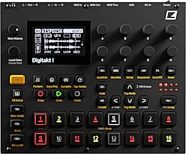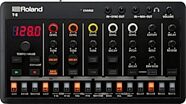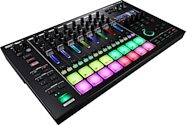Creamware MinimaxASB Virtual Analog Synthesizer
No longer available at zZounds
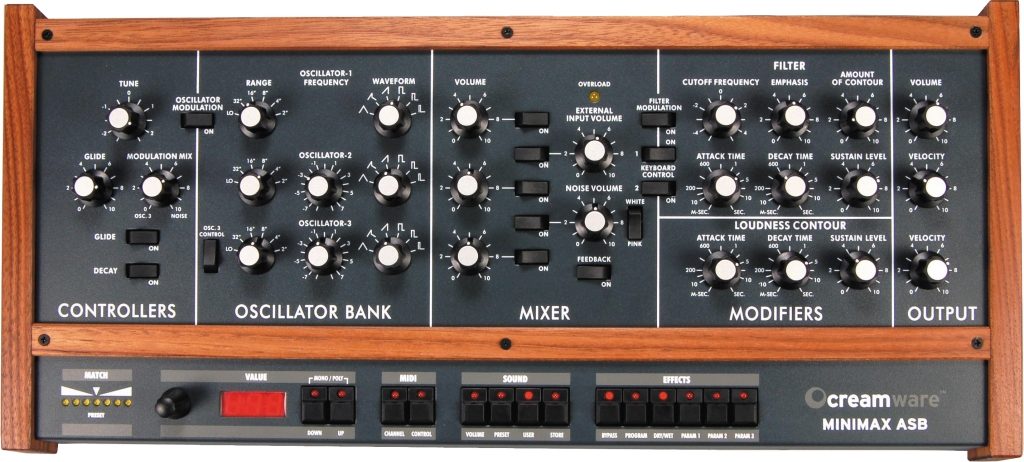
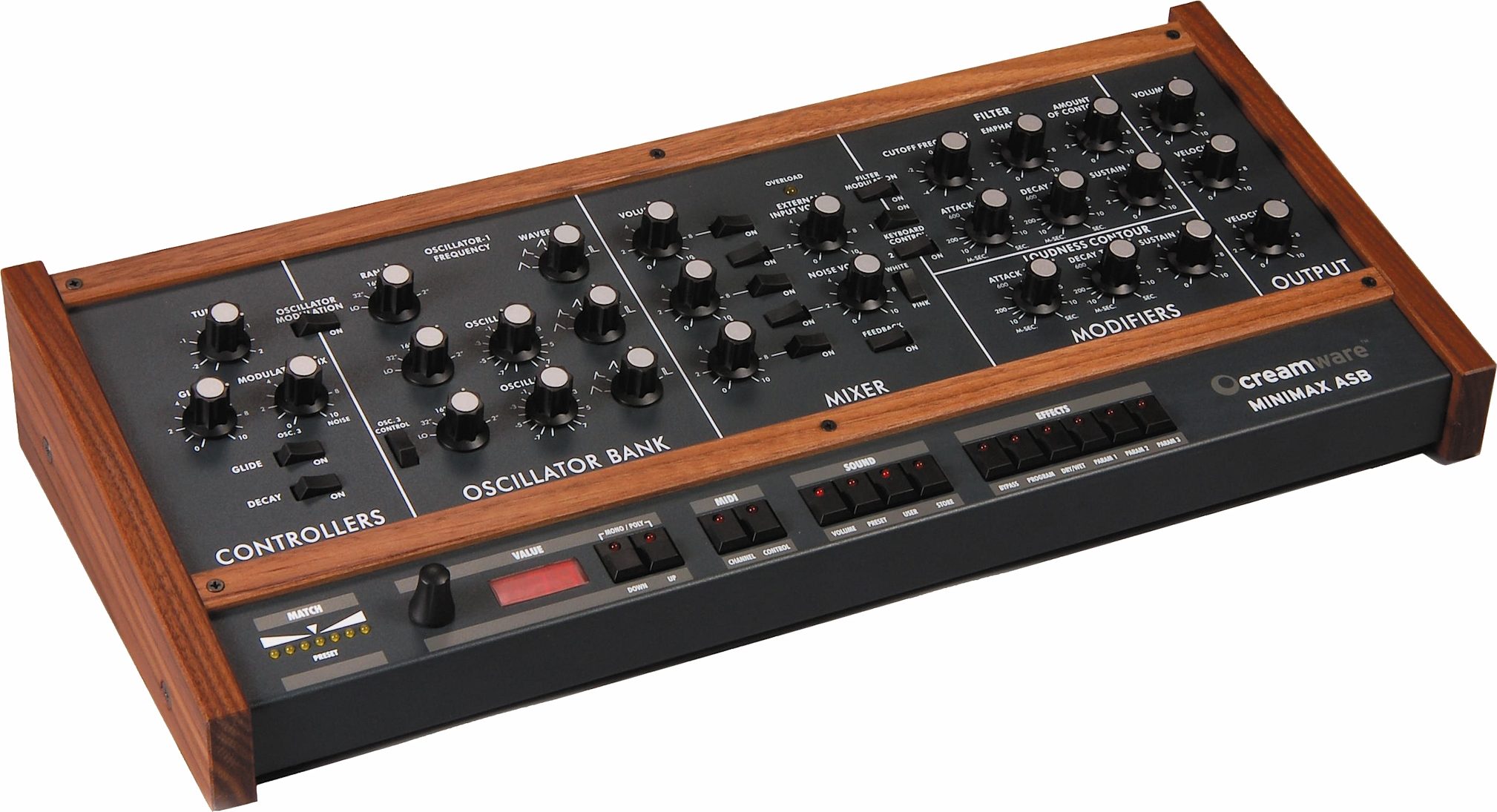
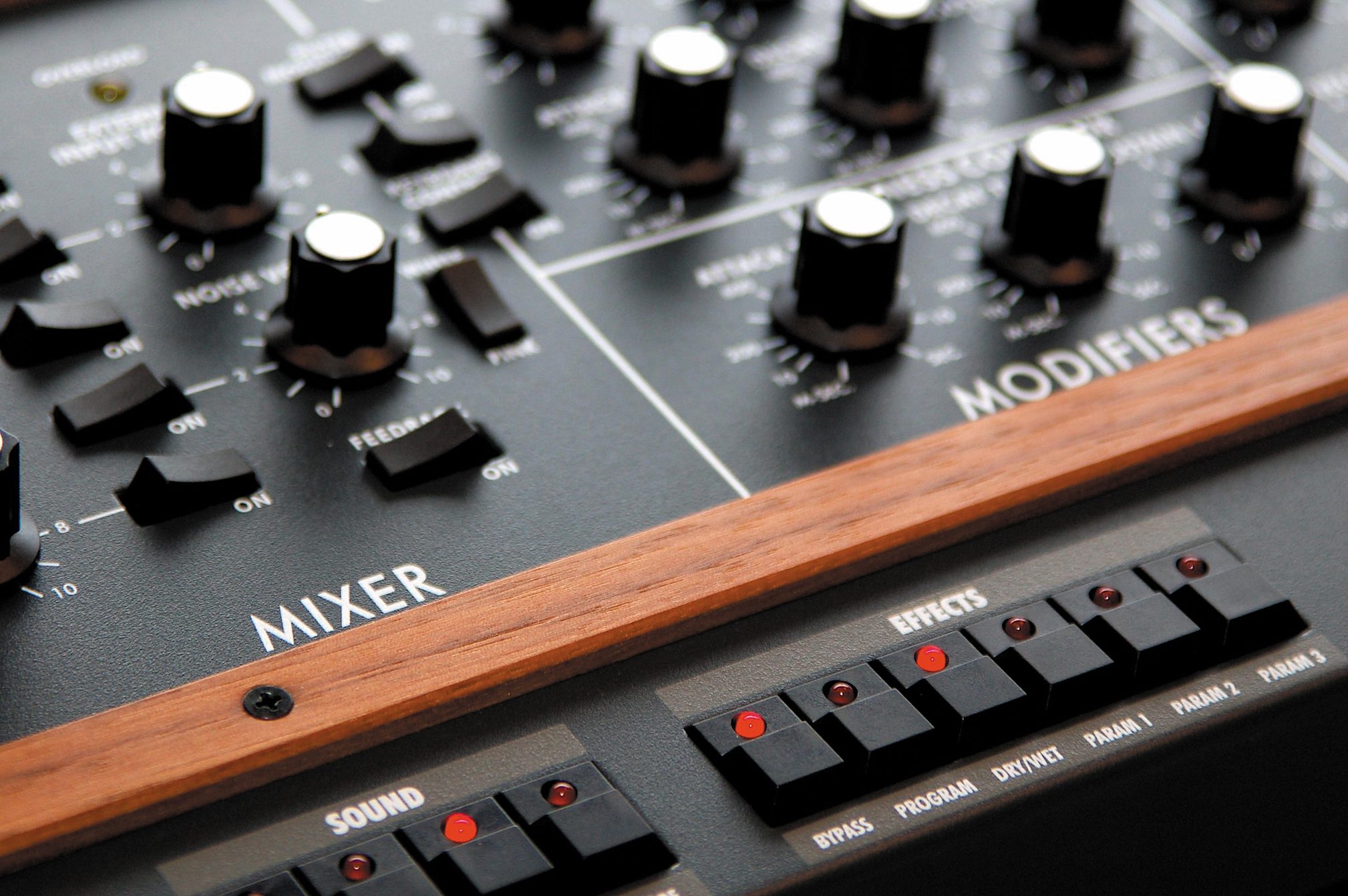



zZounds Gear Experts Say...
With 2 x 2 analog I/O and USB connection for Mac/PC.
Overview
Introduction
From 1970 to 1981 the Minimoog was built over 13,000 times -- much respect, Dr. Moog! 13,000 units are quite a lot. But not enough. So many people wanted one and only few were lucky enough to get hold of a unit.
That hasn't been you? No problem -- here is yours! OK, it's not the original. But Minimax ASB is as close as you can get. The sound: digitally remastered down to each detail. Pro-proof. A full fat, dynamic filter, which offends and provides grip, which keeps you warm and whistles like a teapot on steam oven. Which still knows about the truth behind overmodulation.
Also included: oscillators with wide tires, deep tread and brute output. Speedy envelopes. Twelve voices -- and thus almost as powerful as two Memorymoogs. Btw: of course Minimax ASB is also programmable -- as a matter of course.
Best of all: Minimax ASB not only sounds like a Minimoog -- you can also play it like that. Every pot, every control of the role model is in place. And via remote software you will find further features, which lacked place formerly.
Obvious: if desired, you can also use Minimax ASB as a hyperspiffy controller box for your rompler. And stay right track with your Porsche. Creamware recommends: power up and down with the wallpaper!
Description
Three oscillators, one mixer, which also releases white and pink noise if required, one filter, two ADS-envelopes, oscillator- and filter-FM, feedback (if it has to be a tick more nasty from time to time) -- this is the essence… read more of what made the Minimoog becoming a synthesizer all-time classic. So is the Minimax ASB: clone is clone is clone.
It should be a public secret, that such an apparently spartan setting couldn't prevent concert halls being transformed into a sea of sparkles. But Minimax ASB even goes beyond. You will find velocity-controls for Filter and VCA, 128 phat Presets and as many memory space for your own creations.
And of course -- effects. Chorus, Flanger, delay -- anything you might need life on stage.
But OK: Since 1970 times didn't stay the same. Aftertouch-control of filter-cutoff and volume? Thanks to the remote software not an issue. And the audio input? Can be utilized as emergency room for your floppy rompler.
All because of the sound -- it's that what's most important. Strip lacquer? Bark trees? De-frost the Baikal Sea Try it with the Minimax. It could work out.
History
The Minimax has been the first ASB-Instrument, which was released by CreamWare. Why? Because the Minimoog was the first synthesizer, that wrote himself to the history book of "electronic" music with golden ink and bold letters. Although its creator Dr. Robert Moog first didn't expect the Mini-Version of his "telephone cabinets" would once enrol the music scene up to its fringes. And that the sound until today sawtoothes, blips and snaps from any loudspeaker in the whole world. No doubt: The Minimoog is and will stay being the reference. Nevertheless: in 1981 the last unit was carried out of the factory hall, as production became too expensive then.
But until today the instrument is still worth getting teary-eyed and receiving exorbitant prices on second-hand sales. So what makes the sound of the Minimoog -- and so the Minimax's -- that unique? Perhaps this is due to the fact, that Bob Moog didn't think like a typical engineer, when he once soldered the first prototype of this instrument, which caught the ambitions of fan generations sine. For example the filter: the famous cascaded filter of the Minimoog does anything else, but grinding incoming signals analytically correct. It's the opposite: it stomps the sound until it mashes, it compresses and whirls the phase around, it overmodulates, deep-fries the sound and puts hot mustard on top -- or in short: the filter puts sound thru the hoops angrily. But even if engineers threw their hands up in horror, this is exactly what makes musicians burn. The Minimoog filter always sounds different. Not only warm, but same time vital, soft and brute, dragging and cuddly. And sometimes all of it in parallel.
To rebuild this behavior the digital way is difficult. Very difficult. Creamware succeeded by using their SCOPE-Platform regardless -- publicly acknowledged. Nevertheless something was missing so far: knobs. And the feeling to have an instrument beneath your fingertips -- and not just a Computer. But that's history now.
Don't panic: the Minimoog will live forever! Well, it will become more rare and thus also more expensive. But with the Minimax ASB this is only a plea. The Original now received reinforcement.
Minimoog and Memorymoog are registered trademarks of Moog Music, Inc read less
From 1970 to 1981 the Minimoog was built over 13,000 times -- much respect, Dr. Moog! 13,000 units are quite a lot. But not enough. So many people wanted one and only few were lucky enough to get hold of a unit.
That hasn't been you? No problem -- here is yours! OK, it's not the original. But Minimax ASB is as close as you can get. The sound: digitally remastered down to each detail. Pro-proof. A full fat, dynamic filter, which offends and provides grip, which keeps you warm and whistles like a teapot on steam oven. Which still knows about the truth behind overmodulation.
Also included: oscillators with wide tires, deep tread and brute output. Speedy envelopes. Twelve voices -- and thus almost as powerful as two Memorymoogs. Btw: of course Minimax ASB is also programmable -- as a matter of course.
Best of all: Minimax ASB not only sounds like a Minimoog -- you can also play it like that. Every pot, every control of the role model is in place. And via remote software you will find further features, which lacked place formerly.
Obvious: if desired, you can also use Minimax ASB as a hyperspiffy controller box for your rompler. And stay right track with your Porsche. Creamware recommends: power up and down with the wallpaper!
Description
Three oscillators, one mixer, which also releases white and pink noise if required, one filter, two ADS-envelopes, oscillator- and filter-FM, feedback (if it has to be a tick more nasty from time to time) -- this is the essence… read more of what made the Minimoog becoming a synthesizer all-time classic. So is the Minimax ASB: clone is clone is clone.
It should be a public secret, that such an apparently spartan setting couldn't prevent concert halls being transformed into a sea of sparkles. But Minimax ASB even goes beyond. You will find velocity-controls for Filter and VCA, 128 phat Presets and as many memory space for your own creations.
And of course -- effects. Chorus, Flanger, delay -- anything you might need life on stage.
But OK: Since 1970 times didn't stay the same. Aftertouch-control of filter-cutoff and volume? Thanks to the remote software not an issue. And the audio input? Can be utilized as emergency room for your floppy rompler.
All because of the sound -- it's that what's most important. Strip lacquer? Bark trees? De-frost the Baikal Sea Try it with the Minimax. It could work out.
History
The Minimax has been the first ASB-Instrument, which was released by CreamWare. Why? Because the Minimoog was the first synthesizer, that wrote himself to the history book of "electronic" music with golden ink and bold letters. Although its creator Dr. Robert Moog first didn't expect the Mini-Version of his "telephone cabinets" would once enrol the music scene up to its fringes. And that the sound until today sawtoothes, blips and snaps from any loudspeaker in the whole world. No doubt: The Minimoog is and will stay being the reference. Nevertheless: in 1981 the last unit was carried out of the factory hall, as production became too expensive then.
But until today the instrument is still worth getting teary-eyed and receiving exorbitant prices on second-hand sales. So what makes the sound of the Minimoog -- and so the Minimax's -- that unique? Perhaps this is due to the fact, that Bob Moog didn't think like a typical engineer, when he once soldered the first prototype of this instrument, which caught the ambitions of fan generations sine. For example the filter: the famous cascaded filter of the Minimoog does anything else, but grinding incoming signals analytically correct. It's the opposite: it stomps the sound until it mashes, it compresses and whirls the phase around, it overmodulates, deep-fries the sound and puts hot mustard on top -- or in short: the filter puts sound thru the hoops angrily. But even if engineers threw their hands up in horror, this is exactly what makes musicians burn. The Minimoog filter always sounds different. Not only warm, but same time vital, soft and brute, dragging and cuddly. And sometimes all of it in parallel.
To rebuild this behavior the digital way is difficult. Very difficult. Creamware succeeded by using their SCOPE-Platform regardless -- publicly acknowledged. Nevertheless something was missing so far: knobs. And the feeling to have an instrument beneath your fingertips -- and not just a Computer. But that's history now.
Don't panic: the Minimoog will live forever! Well, it will become more rare and thus also more expensive. But with the Minimax ASB this is only a plea. The Original now received reinforcement.
Minimoog and Memorymoog are registered trademarks of Moog Music, Inc read less
Specs
Where Minimoog sounds come out, there must be a Minimoog inside, isn't it? Unfortunately this is not the case. Or better to say: luckily? Within every Minimax ASB a digital heart is beating. In the following some specifications:
Synthesis type: analog synthesis
Technology: virtual circuit modeling
Number of voices: 12
Sampling rate: 44.1 kHz (internal oversampling)
Resolution: 32-bit audio paths
Analog outputs: 2 x 1/4 in. (6,3mm) unbalanced
Analog inputs: 2 x 1/4 in. (6,3mm) unbalanced
MIDI: In, Out, Thru
USB: full speed USB rev 1.1
Power input: 12V AC/DC, <20 W
Dimensions: 480mm wide (448mm without wood panels), 209mm deep (203mm without wood panels), 40/76mm high (front/back)
Weight: 3.4 kg
Synthesis type: analog synthesis
Technology: virtual circuit modeling
Number of voices: 12
Sampling rate: 44.1 kHz (internal oversampling)
Resolution: 32-bit audio paths
Analog outputs: 2 x 1/4 in. (6,3mm) unbalanced
Analog inputs: 2 x 1/4 in. (6,3mm) unbalanced
MIDI: In, Out, Thru
USB: full speed USB rev 1.1
Power input: 12V AC/DC, <20 W
Dimensions: 480mm wide (448mm without wood panels), 209mm deep (203mm without wood panels), 40/76mm high (front/back)
Weight: 3.4 kg
Documents and Manuals
For support or warranty questions, please contact the manufacturer:
No longer available at zZounds
In most cases, a product is unavailable because it has been discontinued by the manufacturer
This is a carousel with product cards. Use the previous and next buttons to navigate.







